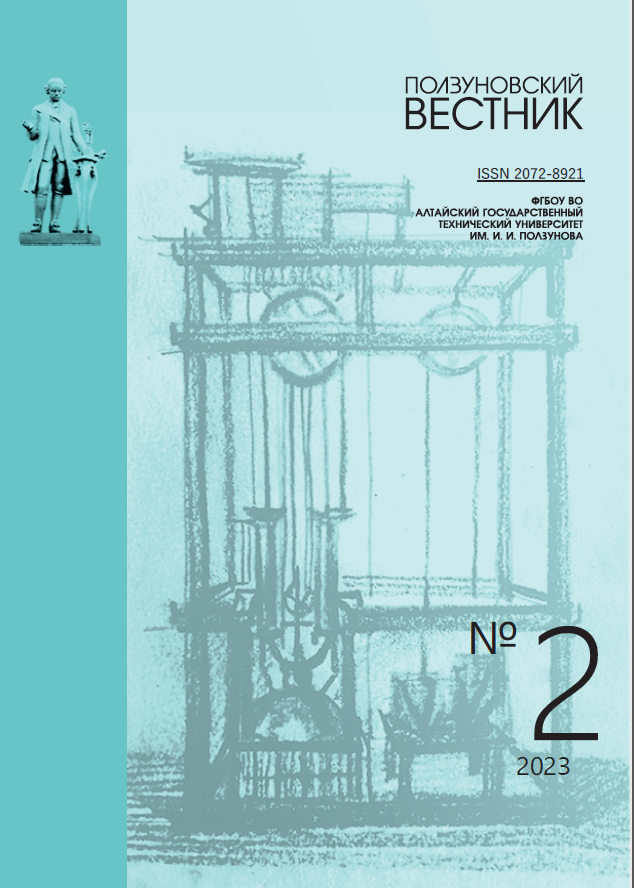FRUIT RAW BIOCHEMICAL COMPOSITION INFLUENCE TO VOLATILE COMPONENTS FORMATION PROCESS DURING DISTILLATION
XBJGZM
DOI:
https://doi.org/10.25712/ASTU.2072-8921.2023.02.003Keywords:
fruit stone raw materials biochemical composition, volatile components, fermented fruit pulp, distillation, distillate fractions, distribution balance of volatile components by fractions, new formation of volatile components, esters, enanthic esters, higher alcoholsAbstract
This work is devoted the raw materials biochemical composition influence assessing to the volatile components new formation processes during distillation. Four samples of fruit stone raw materials (apricot, cherry, dogwood, plum), samples of fermented pulp and distillate fractions were used as objects of study. The work purpose was to identify the raw materials biochemical composition characteristics influence to the volatile components new formation process during distillation. The biochemical composition of fruit raw materials was evaluated by the content of sugars, titrated acids, free amino acids and pectin substances. In the samples of fermented fruit pulp and distillate fractions, the volume fraction of ethyl alcohol and the mass concentration of the main volatile compounds were determined. A positive correlation was established between the concentration of pectin substances in the raw materials and the methanol content in the samples of fermented pulp (R=0.892). The maximum content of enantium esters in fractions obtained during the distillation of plum pulp with an initial strength of 10.1% vol. was revealed. It was found that the total content of ethyl acetate in distillate fractions increases in comparison with the content in the initial fermented pulp by 1.7-2.0 times, isoamyl acetate – by 2.0-2.5 times, enantium esters – by 1.3-2.1 times and higher alcohols – by 1.1-1.3 times. It is shown that the formation of enantium esters at the stage of fermentation of fruit pulp depends, inter alia, on the balance of the carbohydrate and nitrogen composition of the feedstock, and their total content in distillate fractions depends on the strength of the fermented pulp and increases regardless of the type of feedstock, compared with their content in the distilled pulp. It is also shown that the intensity of the process of neoplasm of the main higher alcohols during the distillation of fermented fruit pulp depends on the concentration of free amino acids in the feedstock.
References
Научные аспекты производства крепких спиртных напитков из плодового сырья / Л. А. Оганесянц [и др.] // Виноделие и виноградарство. 2012. № 1. С. 18–19.
Spaho N. Distillation techniques in the fruit spirits production. Distillation – innovative applica-tions and modeling. 2017. doi 10.5772/66774.
Effects of distillation cut on the distribution of higher alcohols and esters in brandy produced from three plum varieties / N. Spaho [et al.] // J. Inst. Brew. 2013. V. 119. P. 48–56. doi 10.1002/jib.62.
Heller D., Einfalt D. Reproducibility of fruit spirit distillation processes // Beverages. 2022. V. 8. 20. doi 10.3390/beverages8020020.
Регулирование концентрации метанола в дистилляте из кизила / Е. В. Дубинина [и др.] // Пиво и напитки. 2020. № 4. С. 21–24. doi 10.24411/2072-9650-2020-10039.
A comprehensive characterization of volatile profiles of plum brandies using gas chromatography coupled to high resolution mass spectrometry / M. Filatova [et al.] // LWT-Food Science and Techno-logy. 2022. V. 167. 113864. doi 10.1016/j.lwt.2022.113864.
Aroma profile design of wine spirits: multi-objective optimization using response surface meth-odology / P. Matias-Guiu [et al.] // Food Chemistry. 2018. V. 245. P. 1087–1097. doi 10.1016/j.foodchem.2017.11.062.
Динамика распределения летучих компонентов при дистилляции вишневой мезги / Л. А. Оганесянц [и др.] // Виноделие и виноградарство. 2016. № 2. С. 9–13.
Скурихин И. М. Химия коньяка и бренди. – М. : ДеЛиПринт, 2005. 296 с.
Мартыненко Э. Я. Технология коньяка. – Симферополь: «Таврида», 2003. 320 с.
Оганесянц Л. А., Лорян Г. В. Летучие ком-поненты щелковичных дистиллятов // Виноделие и виноградарство. 2015. № 2. С. 17–20.
The identification of volatile aroma com-pounds from local fruit based spirits using a head-space solid-phase microextraction technique cou-pled with the gas chromatography-mass spectrome-try / D. Cvetković [et al.] // Advanced Technologies. 2020. V. 9. № 2. P. 19–28. doi: 10.5937/savteh2002019C.
Volatile fingerprinting of the plum brandies produced from different fruit varieties / O. Vyviurska [et al.] // J Food Sci Technol. 2017. V. 54. P. 4284–4301. doi 10.1007/s13197-017-2900-5.
Aromatic compounds of brandies produced from three apricot varieties cultured in Serbia / V. S. Puškaš [et al.] // Journal on Processing and En-ergy in Agriculture. 2017. V. 21. № 2. P. 101–103.
doi 10.5937/JPEA1702101P
Донченко Л. В. Технология пектина и пек-тинопродуктов. М. : Дели. 2000. 255 с.
Downloads
Published
How to Cite
Issue
Section
License
Copyright (c) 2023 Ludmila N. Krikunova 1, Ekaterina V. Ulyanova, Vladimir A. Trofimchenko, Olga N. Obodeeva

This work is licensed under a Creative Commons Attribution 4.0 International License.















 .
. This work is licensed under a
This work is licensed under a 
